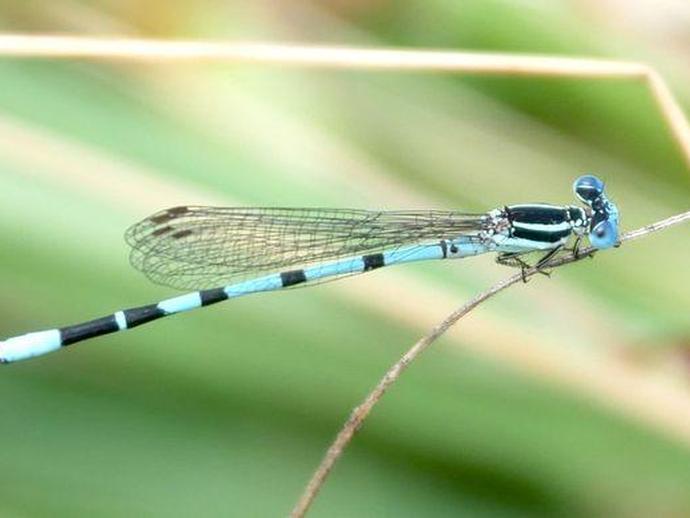July 5, 2021
We're reaching into the archives for today's #BenInNature update presented by our friends at Carter Bank & Trust ! The following post was originally published on July 9, 2020.
Yesterday we looked at a dragonfly, which is a member of the order Odonata. Today we're looking at the other heavy hitter from that same order: the damselfly.
This damselfly is Argia bipunctulata, also known as the "seepage dancer." Like the dragonfly we looked at yesterday, this damselfly is associated with seeps, which are spots where groundwater seeps up to the surface from an underground aquifer.
Damselflies are superficially similar to dragonflies, but there are a few key differences. For one, they're smaller and slimmer. One of the easiest differences to spot is that dragonflies generally hold their wings flat and away from their bodies, while damselflies tend to fold their wings along the length of their bodies when at rest.
While dragonflies are very strong fliers, damselflies tend to be weaker fliers. If you spot a damselfly, it's pretty likely that it hatched only a short distance from the place where you found it.
Like dragonflies, damselflies are predatory, and if you like spending time outdoors during the summer, then the damselfly is your pal. These guys tend to prey on small insects such as flies and mosquitoes, so if you're having a picnic, don't shoo away any damselflies that stop by!
Thank you to VMNH Associate Curator of Invertebrate Zoology Dr. Kal Ivanov for identifying this one for me!
ABOUT #BenInNature
Social distancing can be difficult, but it presents a great opportunity to become reacquainted with nature. In this series of posts, Administrator of Science Ben Williams ventures outdoors to record a snapshot of the unique sights that can be found in the natural world. New updates are posted Monday - Friday, with previous posts highlighted on the weekends. This series of posts is made possible thanks to the support of VMNH Corporate Partner Carter Bank & Trust (www.cbtcares.com).
NATURE PHOTO IDENTIFICATIONS
If you discover something in nature that you would like help identifying, be sure to message us right here on Facebook with a picture (please include location and date of picture) and we'll have our experts help you identify it!

 Hours & Admissions
Hours & Admissions Directions
Directions

